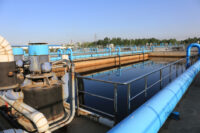CCUS Permitting Faces Stiff Challenges
While the Inflation Reduction Act (IRA) creates opportunities for investors to fund carbon capture, utilization, and sequestration/storage (CCUS) projects and provides Internal Revenue Service (IRS) Section 45Q tax credits at a rate of $85 per ton of carbon dioxide (CO2) captured and stored, the regulatory red tape for permitting in the sector remains daunting. The […]










